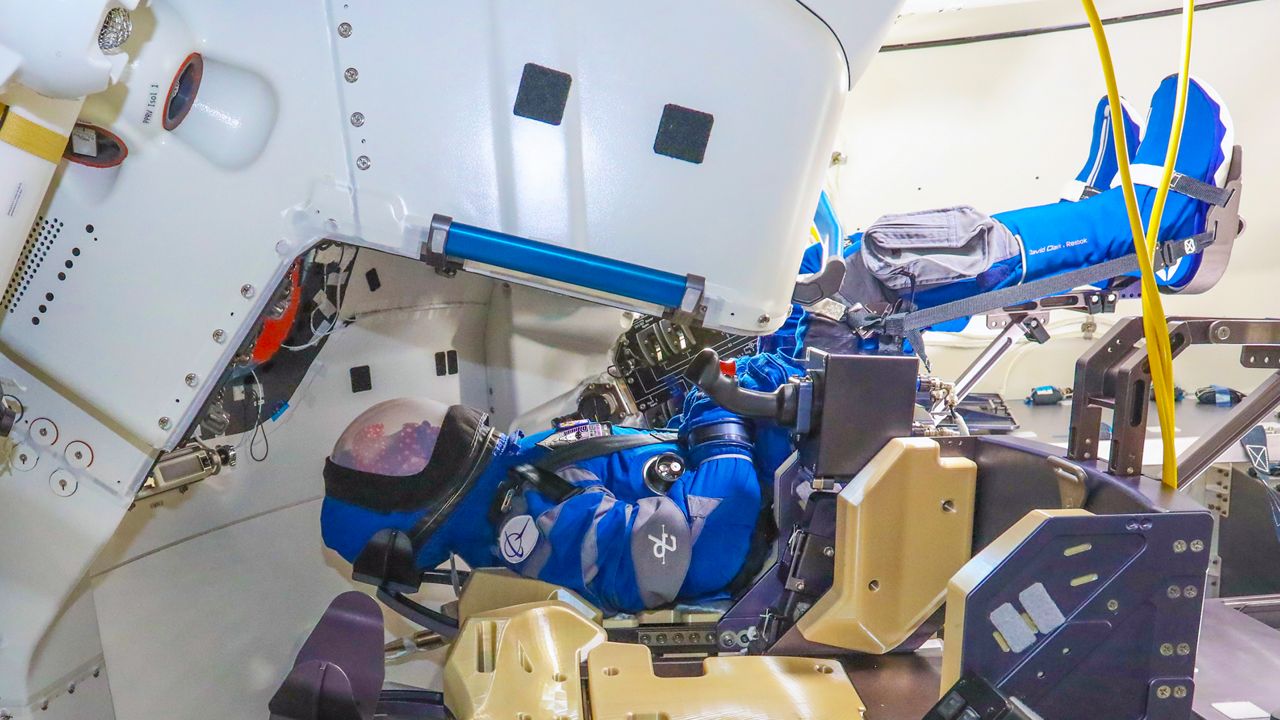CAPE CANAVERAL SPACE FORCE STATION — NASA and Boeing successfully launched an uncrewed Boeing Orbital Flight Test-2 Thursday night. The next step is sending people to the International Space Station.
What You Need To Know
- Orbital Flight Test-2 mission launched Thursday at 6:54 p.m. EDT
- The Starliner space capsule will carry hundreds of pounds of cargo to ISS
- The next Starliner launch will carry humans
- Discover the history of this test and the first one
- Scroll down to watch the launch
The rocket lifted off at 6:54 p.m. EDT from the Space Launch Complex-41 at the Cape Canaveral Space Force Station.
About the mission
The purpose of the mission is to demonstrate the Starliner’s transportation capabilities to the ISS, stated ULA.
Since the Orbital Flight Test-2 was a success, it means the Starliner and the Atlas V rocket will be taking astronauts to the ISS at an undetermined date, confirmed ULA.
“Boeing's Crew Space Transportation (CST)-100 Starliner spacecraft is being developed in collaboration with NASA's Commercial Crew Program,” stated Boeing.
ULA is the joint business venture between Boeing and Lockheed Martin, which are famed for the Delta IV and the Atlas V rockets and the upcoming Vulcan rockets.
ULA added details of the tests that will be done for this mission:
- Performance of the guidance, navigation and control systems
- Ground systems and operations teams
- On-orbit docking of the space station
- Re-entry and landing operations
About 24 hours after the launch, the Starliner capsule will dock with the ISS and it is not going to be empty-handed: It is carrying more than 800 pounds of cargo, including an estimated 500 pounds of NASA cargo and crew supplies, stated NASA in a press release.
NASA stated that the Starliner will spend between five to 10 days onboard the space station before returning to Earth.
After re-entry, the Starliner will parachute down to one of five designated sites in the western U.S., stated ULA.
And just like going to the ISS, the space capsule will not return empty-handed: It will bring back about 600 pounds of cargo, including reusable special oxygen tanks that provide air to the crew members on the space station.
About the ride
The Starliner capsule is designed to be used up to 10 times and it can fit up to seven people inside it. It is about 16.5 feet tall and it has a diameter of nearly 15 feet.
With the Starliner capsule stacked on top of the Atlas V rocket, they both create a combined height of 172 feet.
The Atlas V rocket will have an estimated 29,220 pounds of fuel to send the Starliner and its “pilot” Rosie the Rocketeer to the ISS.

Rosie the Rocketeer will play an important part in the Orbital Flight Test-2 mission. (ULA)
If you want to get really technical, Rosie is ULA’s “anthropometric test device.”
“For OFT-2, spacecraft data capture ports previously connected to Rosie’s 15 sensors will be used to collect data from sensors placed along the seat pallet, which is the infrastructure that holds all the crew seats in place,” NASA described.
Not the first attempt
The Orbital Flight Test-2 was scheduled to launch back in August of 2021, however, moisture in the air got into 13 valves in the Starliner’s propulsion system. This would have resulted in the valves not opening during the launch.
While nine valves were fixed that month, it took months to repair the other four.
In fact, it was supposed to launch earlier that month, but there was a valve issue in the propulsion system, according to Boeing.
During a press conference on Wednesday, NASA astronaut Suni Williams said both Boeing and NASA have been working to resolve the value issues that have plagued the mission.
“It’s a hard problem for them to solve. And they have been doing a great job. Actually, I was just talking to the program manager while we were at rollout this morning. They have another cycle of the valves. … Now that the spacecraft is at the launch pad and that’s every time they cycle the valves, they are getting a little bit more confident that their fixes in place are working,” she said of the engineers tasked with resolving the issue.
If the mission is a success, Williams might be one of the astronauts who will be on the next crewed mission.
The first test
The last time a demonstration was done, it did not go according to plan. The first Orbital Flight Test was in December of 2019. While it successfully launched from Cape Canaveral, a glitch in the mission-elapsed timer caused the spacecraft to go into an orbital insertion burn at the wrong time and used too much fuel.
This meant that while it was in a stable orbit, it could not make a rendezvous with the space station.
Two days after the launch, the Starliner spacecraft landed in White Sands Missle Range in New Mexico.



